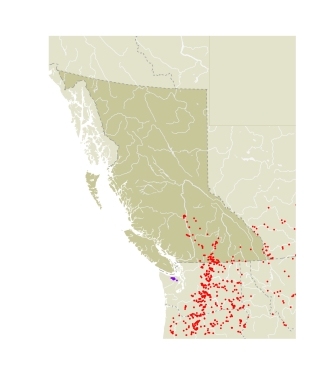When Nabokov (1944) coined this generic name, he said it was allied to the European genus Aricia Rechenbach, 1817. Considering Nabokov's love of word games, the generic name lcaricia is a play on that relationship and the name of the type species, icarioides.
The labides of the male genitalia is stout and often toothed. The falces is short, poorly sclerotized, and often inconspicuous. The dorsal tip of the valve is elongate and enlarged except in the species lcaricia shasta (W.H. Edwards, 1862), which does not occur in our fauna.
This Nearctic genus contains five species. Two occur in BC. Larvae feed on either Fabaceae or Polygonaceae.
|
|
